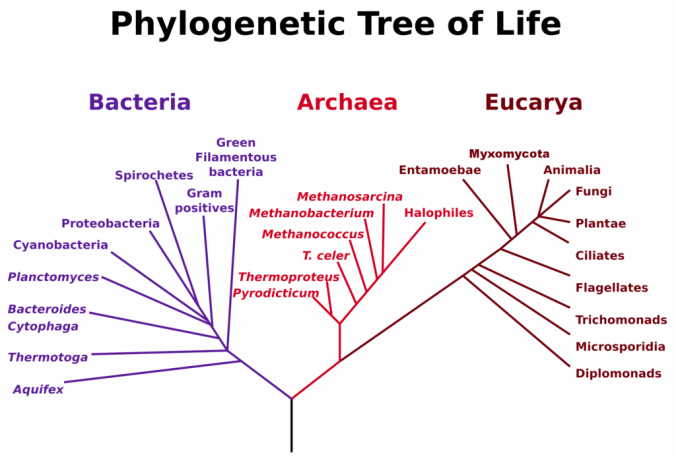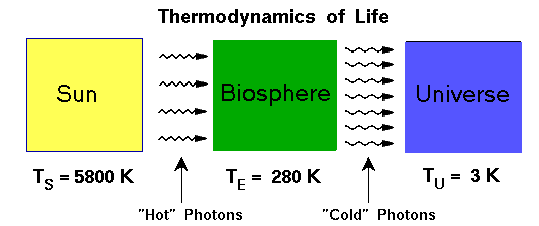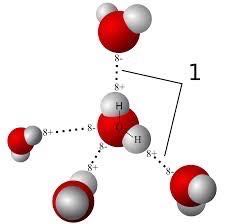Why the Horta would not have looked like a rock monster.
By Rich Feldenberg

In the original Star Trek series the U.S.S. Enterprise, on its heroic five year mission to explore strange new worlds, to seek out new life and new civilizations…, comes across many fascinating and unusual alien species. In one episode in particular, “The Devil in the Dark”, they make contact with a creature with an entirely different kind of biochemistry from the typical carbon based biochemistry seen elsewhere on earth and throughout the galaxy. Captain Kirk and the crew of the StarShip Enterprise first encounter the alien after they respond to a distress call sent from a mining colony on the planet Janis VI. When the Enterprise arrives, Kirk learns that routine mining operations have been disrupted by a strange life form native to the planet. The creature doesn’t register as a life form on the tricorder, lives deep in the darkness of the mines, and can eat through solid rock due to it’s highly corrosive nature. Once Spock learns that the mines contain a multitude of spherical shaped silicon nuggets, he has a hunch. As usual, Spock’s hunch turns out to be correct. The round silicon nuggets are the eggs of a silicon based life form. Spock is able to use his mind melding abilities to communicate briefly with the creature, and learns that it is called a Horta, and that the miners have been destroying its eggs, causing it to face total extinction.
While I applaud the episode for thinking outside the box when it comes to attempting to imagine “life as we don’t know it”, I suggest that making the silicon based Horta, essentially a living rock, showed a poor understanding of both organic and inorganic chemistry. So first let me say what was outstanding about the idea before I lay into it with my chemistry degree equivalent of a phaser set on kill.
Ok, it was great that there was any attempt at all to speculate on the astrobiology of an organism that was not carbon based back in a 1960s TV show. By non-carbon based I’m not talking about energy beings here, but legitimate speculation about an alternative chemical system, as we’ll discuss below. This certainly went well above the usual laziness and poverty of imagination of portraying an alien as a human with pointy ears, or a green girl, or, as in the case of the klingons, with angry eyebrows (they hadn’t evolved there forehead ridges yet!). Now don’t get me wrong, I don’t have anything against a green blooded pointy eared Vulcan. In fact, Mr. Spock may be my all time favorite fictional character, but it really isn’t terribly creative when you consider how life forms on different worlds would likely have evolved down completely different pathways leading to completely unique body plans. In other words, even if most life in the universe is carbon based, like us (probably still a good guess), intelligent aliens wouldn’t necessarily appear anything like humans. Ok, I get it, there were budget issues!
Now, all life on earth is carbon based. Carbon chains form the backbone of all the major classes of biomolecules, such as DNA, protein, carbohydrate, and lipids. Because carbon can form so many complex molecules, it has it’s own special branch of chemistry devoted to it – organic chemistry. The chemistry of every other element falls under the heading of inorganic chemistry. That seems really unfair, right? I mean one element out of the 92 naturally occurring elements, and it gets it’s own branch of science! Well it actually is fair when you consider that the number of possible organic molecules far exceeded the number of inorganic molecules combined by orders of magnitude. There are an estimated 10 million carbon compounds in existence. There are a lot of ways that carbon can react depending on what other atoms are near it on a molecule. Carbon is element number 6. It has 6 electrons in orbitals around a nucleus containing 6 protons and 6 neutrons (at least for carbon12, the most common isotope). Because carbon is in group 14 of the periodic table, its electron configuration is 1S2, 2S2, 2P2. Each S orbital can only hold two electrons but the P orbital can hold up to 6 electrons so there are 4 vacant spots in carbon’s P orbital. There is a tendency for an element to move towards a noble gas configuration, meaning that for reasons related to finding the lowest energy state, and hence the greatest stability, the element will either shed electrons or gain them to mimic the electron configuration of the closest noble gas atom. This is known as the Octet Rule.
Metals typically lose an electron to this end, and non-metals typically gain them. In the case of the non-metal carbon, if it fills its four vacant orbitals with electrons it will have the electronic configuration of the noble gas neon (Ne) with 10 electrons, and, ah that feels so good! Well, how is poor carbon to get four more electrons? That’s where covalent bonding comes in. It shares electrons with other atoms, so carbon will try to form 4 bonds with up to four other atoms. These could be 4 single bonds, in which case carbon is attached to 4 different atoms, or it can also form a combination of single, double, or triple bonds. Both single and double bonds are very common in organic chemistry. The reactive double bonds in carbon based molecules account for a lot of the action in organic chemistry. The really special thing about carbon compounds are that carbon can bond to another carbon, which can bond to another carbon, and so on. In fact, it is very common to see very long chains of carbon bound together making something like a huge protein or DNA molecule, for instance. This would seem to make carbon the best suited element in the periodic kingdom for producing life forms. I’m surprised nature never thought of that, oh wait it did!!
So what about the poor Horta? The Horta is silicon based. Silicon (Si) is in group 14 of the periodic table. Hold on, thats the same column as Carbon (C)! It also means that like carbon, silicon will also want to gain 4 electrons to fill it’s orbitals. By the way, this is why the periodic table is so useful. You can tell a lot about an atom by where it sits on the periodic table. The reason you can go around the table to the next row down and find another element like the one in the row above it is why it is periodic! There are repeating patterns. Anyway, silicon is element number 14, and its electron configuration is 1S2, 2S2, 2P6, 3S2, 3P2. If it can just gain four more electrons it will have the stable electron configuration of the noble gas Argon (Ar). It is for this reason that people have speculated that if there is any other element in the periodic table that could cast a little carbon-like magic, it would have to be silicon. The other great thing about silicon is that it is common, really common. It is the 8th most common element in the universe (carbon is the 4th most common element in the universe), and is second only to oxygen, as the most common in the earth’s crust. It is found in rock and sand all over the earth. You certainly wouldn’t want to have a life form based on a very rare element like Lanthanum (element 57), for instance, where there isn’t enough of it around to make anything useful. You want your building materials to be lying around everywhere.

Unfortunately, the problems faced by silicon based life forms would be many. First of all, while silicon is capable of forming a variety of silicon compounds, and even forming chains of silicon (silanes) that resemble the long chain alkanes of carbon, the number of actual silicon compounds is far lower than for that of carbon. The Si-Si single bond is weaker than a C-C single bond due to the silicon atom being larger, and thus the silicon atoms are further apart. This makes silicon bonds unstable, and you don’t see very long chains of Si show much permanence. They break apart quickly, and in fact, are so reactive that they will spontaneously combust in an oxygen atmosphere. Really very bad for any oxygen breathing lifeforms. Also, whereas, carbon readily forms double bonds, silicon is less likely to form many double bonds, which again limits the kind of chemistry it can undergo. Double bonds expose electrons to “attack” by other molecules – this is the beauty of organic chemistry – so fewer double bonds in Si lead to fewer potential chemical reactions. Again, boring chemistry equals inert substances, not vibrant living materials.

Carbon also loves to form carbon rings, even rings that include double bonds that provide a special stability due to a property called resonance associated with the electrons in the ring system. This is a bit like a little electric circuit in the molecule where the electron can have room to move around and make the bonds between atoms even stronger. These kind of compounds are called aromatic compounds and are extremely common in living things on earth. Si doesn’t form rings very readily so the equivalent sorts of aromatic Si compounds would be unlikely to exist.
Remember, life is all about lots of interesting chemistry. Interesting chemistry may not explain the purpose of life, but it’s one way to sum up what life is. It seems most likely that life would only thrive and evolve if it’s chemistry allowed a lot of diversity and potential to form many varieties of stable compounds. Limitation in the number and stability of compounds and number of reactions is like a death blow to the odds of life. But what about the Jurassic Park law of biology that says, “life finds a way”? Yeah, that may be so, but it found carbon chemistry out of all the other useless junk on the periodic table.
In addition to these problems, there is the problem of how silicon would be recycled throughout it’s biosphere. Carbon is well suited for recycling due to it’s ability to form the simple gas CO2 (carbon dioxide). As we all know, CO2 is taken up by plants, and using the energy of the sun, uses the carbon to make glucose (a carbon compound in a ring shape) and releases the waste product molecular oxygen (O2). Animals eat the plants, thereby gaining the glucose for energy and delivery of a carbon source to make more kinds of carbon compounds. For both animals and plants the glucose can be oxidized – burned in the presence of oxygen in the tiny midi-chlorians in the cell (sorry, I meant mitochondria)- to release the energy stored in the carbon bonds. This is the process of chemical respiration. Once the animal dies, its body decomposes (oxidizes!), and CO2 is released back into the atmosphere where plants can take it in again. This is the carbon cycle, and it makes life on earth sustainable for billions of years.
For silicon life forms there would need to be some sort of silicon cycle. This is problematic since SiO2, while common, is solid and not a gas. It is also not soluble in water, so how it would circulate through the biosphere to become accessible to the silicon life forms that need it may create an insurmountable dilemma. With no silicon cycle, even if silicon based life could somehow get a foothold with it’s weak and limited bonding capabilities, it would quickly shut down once the available silicon became trapped in all the dead silicon organisms.
Ok, so I’ve tried to illustrate why silicon based life forms probably won’t exist to begin with, but let’s say, for the sake of argument, the Horta really was based on Si chemistry. Why wouldn’t look like a big rock? This is the thing that really irks me!! The whole point of invoking the possibility of Si life is because silicon has some chemical similarity to carbon due to its similar electron configuration. So our imagining a Si based creature to be essentially a living rock is analogous to an intelligent silicon based species speculating that carbon based life forms would be like living lumps of coal or dangerous diamond creatures that can scratch glass. It might make for a good episode of space Sci-Fi for our silicon based friends to watch on TV, but you can see that this is obviously an incorrect interpretation. There is a huge diversity of life on earth but we don’t have living coal or diamond creatures. The reason, of course is that carbon forms very complex compounds with itself and with lots of other kinds of atoms. Coal and diamond are basically crystallized forms of carbon. Crystals are not suitable for the basis of life because they don’t allow a lot of rapidly changing chemistry to happen within them.
If the Horta was silicon based, the whole point would be that Si would be mimicking the complexity and diversity of carbon, and its tissues should be no more rock-like than earth creatures are diamond-like, but instead have soft squishy muscles, nerves, intestines, kidneys, blood, and so on. It could be conceivable that the Horta could have a hard outer shell made of silicon dioxide (SiO2) but it’s whole body would not be silicon based rock. This misinterpretation was brought home when Dr. McCoy was asked to treat the phaser wounded Horta and replied, “I’m a doctor, not a bricklayer”. Captain Kirk appropriately reprimands McCoy telling him, “Your a healer, there’s a patient, that’s an order”.
At the end of the Star Trek episode, Kirk realizes that the Horta was only a protective mother and didn’t wish to harm the miners or their equipment. The crew of the Enterprise is able to make the miners understand that the Horta means them no harm if they leave her eggs alone. In fact, the natural mining abilities of the Horta could make a collaboration between the miners and the Horta very profitable. As the Enterprise leaves orbit, the many Horta eggs are getting ready to hatch. Too bad that due to their silicon chemistry they are likely to spontaneously combust when they are exposed to the oxygen rich atmosphere that the humans are breathing!
References:
2. General Chemistry, Principles and Modern Applications, third edition
By Ralph H. Petucci.
3. Inorganic Chemistry; third edition, by James E. Huheey.























